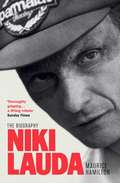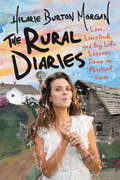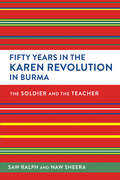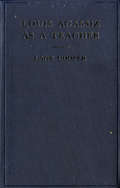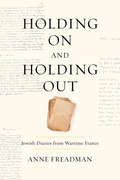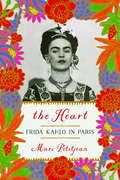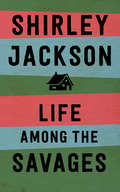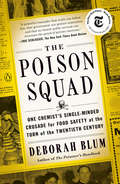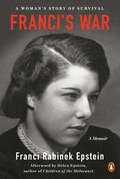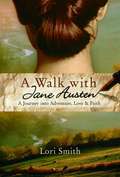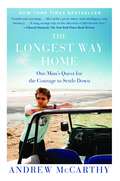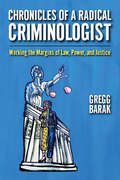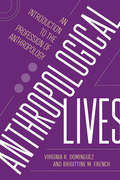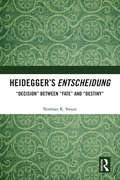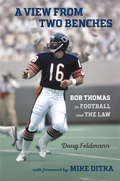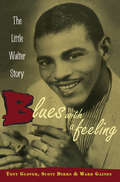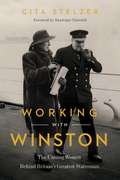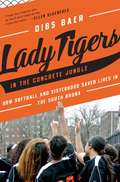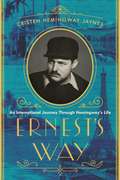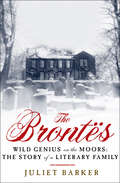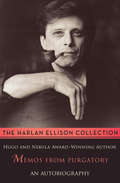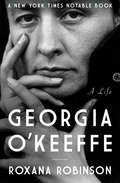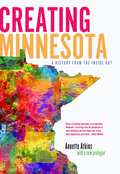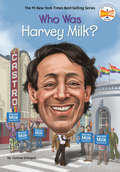- Table View
- List View
Niki Lauda: The Biography
by Maurice HamiltonThe most comprehensive and detailed biography of Formula One legend Nick Lauda ever published, as told by Maurice Hamilton, who knew him for more than forty years. From the famous rivalry with James Hunt in the 1970s, as depicted in the film Rush, to working with Lewis Hamilton at Mercedes, Lauda's career helped define modern F1. In 1975, Lauda became world champion for the first time. Driving for Ferrari, he looked to retain his title in 1976 and was dominating the campaign ahead of James Hunt in his McLaren. Then, on 1 August, he was involved in a horrendous crash at the Nurburgring and was badly burned and in hospital he was given the last rites, so severe were his injuries. Remarkably, six weeks later, he was back racing again, determined to show he could still compete. As they came to the final race of the season in Japan, Lauda held a narrow lead in the championship, but in appalling weather conditions, Lauda withdrew from the race, while Hunt went on to secure the points he needed to become world champion. It was high-speed drama at its best. Lauda came back to win the title again in 1977 and then, having temporarily retired, he won it for a third time in 1984, driving for McLaren. When he finally finished as an F1 driver, he started his own airline, before he returned to the sport in various management roles, latterly as chairman of Mercedes, where he helped in the negotiations to bring Lewis Hamilton to the team. Maurice Hamilton, who first met Lauda in 1971, draws together the remarkable story of one of the greatest stars in Formula One history. Based on interviews with friends and family, rival drivers and those he worked with later in his career, Niki Lauda is a superb and definitive tribute to a remarkable character, who died in May 2019 at the age of seventy.
The Rural Diaries: Love, Livestock, and Big Life Lessons Down on Mischief Farm
by Hilarie BurtonThe beloved actress and star of One Tree Hill, White Collar, and Lethal Weapon, Hilarie Burton Morgan, tells the story of leaving Hollywood for a radically different kind of life in upstate New York with her husband Jeffrey Dean Morgan—a celebration of community, family, and the value of hard work in small town America. <P><P>While Hilarie Burton Morgan's hectic lifestyle as an actress in New York and Los Angeles gave her a comfortable life, it did not fulfill her spiritually or emotionally. After the birth of their first son, she and her husband Jeffrey Dean Morgan, the star of The Walking Dead, decided to make a major change: they bought a working farm in Rhinebeck, New York, and began a new chapter in their lives. <P><P>The Rural Diaries chronicles her inspiring story of farm life: chopping wood, making dandelion wine, building chicken coops. Burton looks back at her transition from urban to country living—discovering how to manage a farm while raising her son and making friends with her new neighbors. <P><P>She mixes charming stories of learning to raise alpacas and buying and revitalizing the town’s beloved candy store, Samuel’s Sweet Shop, with raw observations on the ups and downs of marriage and her struggles with secondary infertility. Burton also includes delicious recipes that can be made with fresh ingredients at home, as well as home renovation and gardening tips. <P><P>Burton’s charisma, wide eyed attitude, and fortitude—both internal and physical—propels this moving story of transformation and self-discovery. The Rural Diaries honors the values and lifestyle of small-town America and offers inspiration for anyone longing to embark on their own unconventional journey. <p><p><b>A New York Times Bestseller</b>
Fifty Years in the Karen Revolution in Burma: The Soldier and the Teacher
by Ralph SheeraFifty Years in the Karen Revolution in Burma is about commitment to an ideal, individual survival and the universality of the human experience. A memoir of two tenacious souls, it sheds light on why Burma/Myanmar's decades-long pursuit for a peaceful and democratic future has been elusive. Simply put, the aspirations of Burma's ethnic nationalities for self-determination within a genuine federal union runs counter to the idea of a unitary state orchestrated and run by the dominant majority Burmans, or Bamar.This seemingly intractable dilemma of opposing visions for Burma is personified in the story of Saw Ralph and Naw Sheera, two prominent ethnic Karen leaders who lived—and eventually left—"the Longest War," leaving the reader with insights on the cultural, social, and political challenges facing other non-Burman ethnic nationalities.Fifty Years in the Karen Revolution in Burma is also about the ordinariness and universality of the challenges increasingly faced by diaspora communities around the world today. Saw Ralph and Naw Sheera's day to day lives—how they fell in love, married, had children—while trying to survive in a precarious war zone—and how they had to adapt to their new lives as refugees and immigrants in Australia will resound with many.
Louis Agassiz as a Teacher: Illustrative Extracts on His Method of Instruction
by Lane CooperBy a succession of living pictures, as it were, this book shows the eminent naturalist in the very act of teaching. Sometimes he himself speaks, sometimes distinguished pupils of his reveal in their own words the process by which they were led to nature through direct and independent observation. The enthusiasm of their accounts is contagious.This collection of illustrative extracts on the ideals and practice of Louis Agassiz is probably unique in giving the actual methods of a great man of science in developing good students who could, in their turn, wisely instruct others. The book should be in the hands of all teachers, and of those who are preparing to teach.
Holding On and Holding Out: Jewish Diaries from Wartime France
by Anne FreadmanExamining the diary as a particular form of expression, Holding On and Holding Out provides unique insight into the experiences of Jews in France during the Second World War. Unlike memoirs and autobiographies that reconstruct particular life stories or events, diaries record daily events without the benefit of retrospect, describing events as they unfold. Holding On and Holding Out assesses how individuals used diaries to record their daily life under persecution, each waiting for some end with a mix of hope and despair. Some used the diary to bear witness not only to the terror of their own lives, but also to the lives and suffering of others. Others used their writing as a memorial to people who were killed. All used their writing to assert: "I live, I will have lived." Holding On and Holding Out follows the diaries of two specific individuals, Raymond-Raoul Lambert and Benjamin Schatzman, from their first entry to the last one they wrote before they disappeared into the Nazi extermination camps. The author concludes the book by considering how reflections on their experience are informed by the times in which they lived, before the advent of persecution.
The Heart: Frida Kahlo in Paris
by Marc PetitjeanThis intimate account offers a new, unexpected understanding of the artist’s work and of the vibrant 1930s surrealist scene. In 1938, just as she was leaving Mexico for her first solo exhibition in New York, Frida Kahlo was devastated to learn from her husband, Diego Rivera, that he intended to divorce her. This latest blow followed a long series of betrayals, most painful of all his affair with her beloved younger sister, Cristina. In early 1939, anxious and adrift, Kahlo traveled from the United States to France—her only trip to Europe and the beginning of a unique period of her life when she was enjoying success on her own. Now, for the first time, this previously overlooked part of her story is brought to light in exquisite detail. Marc Petitjean takes the reader to Paris, where Kahlo spends her days alongside luminaries such as Pablo Picasso, André Breton, Dora Maar, and Marcel Duchamp. Using Kahlo’s whirlwind romance with the author’s father, Michel Petitjean, as a jumping-off point, The Heart: Frida Kahlo in Paris provides a striking portrait of the artist and an inside look at the history of one of her most powerful, enigmatic paintings.
Life Among the Savages
by Shirley JacksonIn a hilariously charming domestic memoir, America’s celebrated master of terror turns to a different kind of fright: raising children. In her celebrated fiction, Shirley Jackson explored the darkness lurking beneath the surface of small-town America. But in Life Among the Savages, she takes on the lighter side of small-town life. In this witty and warm memoir of her family’s life in rural Vermont, she delightfully exposes a domestic side in cheerful contrast to her quietly terrifying fiction. With a novelist’s gift for character, an unfailing maternal instinct, and her signature humor, Jackson turns everyday family experiences into brilliant adventures.
The Poison Squad: One Chemist's Single-Minded Crusade for Food Safety at the Turn of the Twentieth Century
by Deborah BlumFrom Pulitzer Prize winner and New York Times-bestselling author Deborah Blum, the dramatic true story of how food was made safe in the United States and the heroes, led by the inimitable Dr. Harvey Washington Wiley, who fought for change <p><p> By the end of nineteenth century, food was dangerous. Lethal, even. "Milk" might contain formaldehyde, most often used to embalm corpses. Decaying meat was preserved with both salicylic acid, a pharmaceutical chemical, and borax, a compound first identified as a cleaning product. This was not by accident; food manufacturers had rushed to embrace the rise of industrial chemistry, and were knowingly selling harmful products. <p> Unchecked by government regulation, basic safety, or even labelling requirements, they put profit before the health of their customers. By some estimates, in New York City alone, thousands of children were killed by "embalmed milk" every year. Citizens--activists, journalists, scientists, and women's groups--began agitating for change. But even as protective measures were enacted in Europe, American corporations blocked even modest regulations. <p> Then, in 1883, Dr. Harvey Washington Wiley, a chemistry professor from Purdue University, was named chief chemist of the agriculture department, and the agency began methodically investigating food and drink fraud, even conducting shocking human tests on groups of young men who came to be known as, "The Poison Squad." Over the next thirty years, a titanic struggle took place, with the courageous and fascinating Dr. Wiley campaigning indefatigably for food safety and consumer protection. <p> Together with a gallant cast, including the muckraking reporter Upton Sinclair, whose fiction revealed the horrific truth about the Chicago stockyards; Fannie Farmer, then the most famous cookbook author in the country; and Henry J. Heinz, one of the few food producers who actively advocated for pure food, Dr. Wiley changed history. When the landmark 1906 Food and Drug Act was finally passed, it was known across the land, as "Dr. Wiley's Law." <p> Blum brings to life this timeless and hugely satisfying "David and Goliath" tale with righteous verve and style, driving home the moral imperative of confronting corporate greed and government corruption with a bracing clarity, which speaks resoundingly to the enormous social and political challenges we face today.
Franci's War: A Woman's Story of Survival
by Franci Rabinek EpsteinThe engrossing memoir of a spirited and glamorous young fashion designer who survived World War ll, with an afterword by her daughter, Helen Epstein.In the summer of 1942, twenty-two year-old Franci Rabinek--designated a Jew by the Nazi racial laws--arrived at Terezin, a concentration camp and ghetto forty miles north of her home in Prague. It would be the beginning of her three-year journey from Terezin to the Czech family camp in Auschwitz-Birkenau, to the slave labor camps in Hamburg, and Bergen Belsen. After liberation by the British in April 1945, she finally returned to Prague.Franci was known in her group as the Prague dress designer who lied to Dr. Mengele at an Auschwitz selection, saying she was an electrician, an occupation that both endangered and saved her life. In this memoir, she offers her intense, candid, and sometimes funny account of those dark years, with the women prisoners in her tight-knit circle of friends.Franci's War is the powerful testimony of one incredibly strong young woman who endured the horrors of the Holocaust and survived.
A Walk with Jane Austen: A Journey into Adventure, Love, and Faith
by Lori SmithAt thirty-three, Lori Smith found herself falling short of her expectations: single, facing a difficult job, and sinking fast into something like depression. She needed a change. So, instead of waiting for her Darcy to present himself, she makes the long-awaited leap, leaving her job and country to travel through Jane Austen's England. On an adventure of multi-layered discovery, Lori leads readers through Jane's life and the landscapes she knew and loved - from Oxford to Bath, to London and the Hampshire countryside - and through her own emotional landscapes, in which grace and hope take the place of stagnation and despair. Along the way, we explore the small things and the great things, both meanness and goodness in relationships, to discover what Austen herself knew: the joy of life, however ordinary or unexpected.
The Longest Way Home: One Man's Quest for the Courage to Settle Down
by Andrew MccarthyWITH AN IRREPRESSIBLE TASTE for adventure, candor, and a vivid sense of place, award-winning travel writer and actor Andrew McCarthy takes us on a deeply personal journey played out amid some of the world's most evocative locales. Unable to commit to his fiancÉe of nearly four years--and with no clear understanding of what's holding him back--Andrew McCarthy finds himself at a crossroads, plagued by doubts that have clung to him for a lifetime. Something in his character has kept him always at a distance, preventing him from giving himself wholeheartedly to the woman he loves and from becoming the father that he knows his children deserve. So before he loses everything he cares about, Andrew sets out to look for answers. Hobbling up the treacherous slopes of Mt. Kilimanjaro, dodging gregarious passengers aboard an Amazonian riverboat, and trudging through dense Costa Rican rain forests--Andrew takes us on exotic trips to some of the world's most beautiful places, but his real journey is one of the spirit. On his soul-searching voyages, Andrew traces the path from his New Jersey roots, where acting saved his life--and early fame almost took it away--to his transformation into a leading travel writer. He faces the real costs of his early success and lays bare the evolving nature of his relationships with women. He explores a strained bond with his father, and how this complex dynamic shapes his own identity as a parent. Andrew charts his journey from ambivalence to confidence, from infidelity and recklessness to acceptance and a deeper understanding of the internal conflicts of his life. A gifted writer with an unsparing eye, Andrew relishes bizarre encounters with the characters whom he encounters, allowing them to challenge him in unexpected ways. He gets into peculiar, even dangerous situations that put him to the test--with mixed results. Disarmingly likable, Andrew is open, honest, and authentic on every page, and what emerges is an intimate memoir of self-discovery and an unforgettable love song to the woman who would be his wife.
Chronicles of a Radical Criminologist: Working the Margins of Law, Power, and Justice (Critical Issues in Crime and Society)
by Gregg BarakOver the past five decades, prominent criminologist Gregg Barak has worked as an author, editor, and book review editor; his large body of work has been grounded in traditional academic prose. His new book, Chronicles of a Radical Criminologist, while remaining scholarly in its intent, departs from the typical academic format. The book is a a first-person account that examines the linkages between one scholar's experiences as a criminologist from the late 1960s to the present and the emergence and evolution of radical criminology as a challenge to developments in mainstream criminology. Barak draws upon his own experiences over this half-century as a window into the various debates and issues among radical, critical, and technocratic criminologies. In doing so, he revisits his own seminal works, showing how they reflect those periods of criminological development. What holds this book together is the story of how resisting the crimes of the powerful while struggling locally for social justice is the essence of critical criminology. His seven chapters are divided into three parts—academic freedom, academic activism, and academic praxis—and these connected stories link the author's own academic career in Berkeley, California; Las Vegas, Nevada; Chicago; Alabama; Ann Arbor, Michigan; and across the United States. Barak's eventful scholarly life involved efforts to overcome laws against abortion and homosexuality; to formalize protective practices for women from domestic violence and sexual assault; to oppose racism and classism in the criminal justice system; to challenge the wars on gangs, drugs, and immigrants; and to confront the policies of mass incarceration and the treatment of juvenile offenders.
Anthropological Lives: An Introduction to the Profession of Anthropology
by Virginia R Dominguez Brigittine M. FrenchAnthropological Lives introduces readers to what it is like to be a professional anthropologist. It focuses on the work anthropologists do, the passions they have, the way that being an anthropologist affects the kind of life they lead. The book draws heavily on the experiences of twenty anthropologists interviewed by Virginia R. Dominguez and Brigittine M. French, as well as on the experiences of the two coauthors. Many different kinds of anthropologists are represented, and the book makes a point of discussing their commonalities as well as their differences. Some of the anthropologists included work in the academy, some work outside the academy, and some work in institutions like museums. Included are cultural anthropologists, linguistic anthropologists, medical anthropologists, biological anthropologists, practicing anthropologists, and anthropological archaeologists. A fascinating look behind the curtain, the stories in Anthropological Lives will inform anyone who has ever wondered what you do with a degree in anthropology. Anthropologists profiled: Leslie Aiello, Lee Baker, João Biehl, Tom Boellstorff, Jacqueline Comito, Shannon Dawdy, Virginia R. Dominguez, T.J. Ferguson, Brigittine French, Agustín Fuentes, Amy Goldenberg, Mary Gray, Sarah Green, Monica Heller, Douglas Hertzler, Ed Liebow, Mariano Perelman, Jeremy Sabloff, Carolyn Sargent, Marilyn Strathern, Nandini Sundar, Alaka Wali.
Heidegger’s Entscheidung: “Decision” Between “Fate” and “Destiny”
by Norman K. SwazoThis book critically examines the debate on Martin Heidegger’s concept of Entscheidung ("decision") and his engagement and confrontation with Nazism in terms of his broader philosophical thought. It argues that one cannot explain Heidegger’s actions without accounting for his idea of "decision" and its connection to his understanding of individual "fate" and national (and European) "destiny." The book looks at the relation of biography to philosophy and the ethical and political implications of appropriating Heidegger’s thinking in these domains of inquiry. It highlights themes such as Heidegger’s differences with the neo-Kantians in Germany; Heidegger on Kant and practical reason; and his reading of Nietzsche and Hegel. It offers a philosophical assessment grounded in Heidegger’s own texts, with reference to historical and other philosophical commentaries on the rise of National Socialism in post-Weimar Germany and the philosophical issues associated with the interpretation of Nazi genocide and ideology. An important intervention in Western philosophy, this book will be of great interest to scholars and researchers of political philosophy, continental philosophy, German philosophy, philosophy in general, and political studies.
A View from Two Benches: Bob Thomas in Football and the Law
by Doug FeldmannWhether in football or in the law, Illinois Supreme Court Justice Robert Thomas has always had the "best view from the bench."Bob Thomas got his start in football at the University of Notre Dame, kicking for the famed "Fighting Irish" in the early 1970s. Claimed off waivers by the Chicago Bears in 1975, Thomas helped to take the franchise from their darkest days to their brightest. Yet, on the cusp of the team's greatest moment, he was struck with a shocking blow that challenged his fortitude.In this dramatic retelling of Bob Thomas's fascinating life, renowned sports writer Doug Feldmann shows how neither football nor the law was part of Thomas's dreams while growing up the son of Italian immigrants in Rochester, New York, in the 1960s. Chasing excellence on both the gridiron and in the courtroom, however, would require resilience in ways he could not have imagined.As A View from Two Benches shows us, Bob Thomas reached the top of two separate and distinct professions, guided by a bedrock of faith that has impacted his decisions and actions as both a football player and a judge, helping him navigate the peaks and valleys of life. As Doug Feldmann reveals, Bob Thomas has always stayed true to the values he learned in his earliest days.Doug Feldmann's rich biography of an accomplished kicker and a proud justice of the law shows us that determination and resilience go a long way to a successful and impactful life.
Blues with a Feeling: The Little Walter Story
by Tony Glover Scott Dirks Ward GainesWhenever you hear the prevalent wailing blues harmonica in commercials, film soundtracks or at a blues club, you are experiencing the legacy of the master harmonica player, Little Walter. Immensely popular in his lifetime, Little Walter had fourteen Top 10 hits on the R&B charts, and he was also the first Chicago blues musician to play at the Apollo. Ray Charles and B.B. King, great blues artists in their own right, were honored to sit in with his band. However, at the age of 37, he lay in a pauper's grave in Chicago. This book will tell the story of a man whose music, life and struggles continue to resonate to this day.
Working with Winston: The Unsung Women Behind Britain's Greatest Statesman
by Cita StelzerAn original and insightful look at Winston Churchill through the eyes of those who knew him best—the women who worked with him throughout his life. All politicians adopt a public persona that they believe contributes to electoral success. Though they might reflect the character of the politician, they reveal only a part of the man. What we know less about are the characteristics that Winston Churchill revealed when he was out of the public eye. Much has been written about Churchill, and of the important world leaders, politicians, high-ranking military personnel with whom he interacted. But Churchill also required a vast staff to maintain the intense pace at which he worked. When Churchill strode the world stage, the secretarial and support staff positions were inevitably filled by women. Though extraordinarily talented and valuable to Churchill and his work, these women remain unheralded. He was not an easy employer. He was intimidating, with never-ending demands who would impose his relentless and demanding schedules on those around him. And yet these women were devoted to him, though there were times in his political career in which he was decidedly unpopular. Many reflect upon their years working for him as the best years of their lives. Intelligent and hard-working, these women were far from sycophants. Just as Churchill was no ordinary Prime Minister, these women were not ordinary secretaries. Indeed, in today’s terms their titles would be much grander, as their work encompassed ultra-secret documents and decrypting and reading enemy codes. A treasure trove of insight and research, Working with Winston reveals the man behind the statesman and as well as brings long-overdue recognition to the “hidden army” that, like Churchill, was never off-duty.
Lady Tigers in the Concrete Jungle: Sisterhood, Softball, And Saving Lives In The South Bronx
by Dibs BaerA rousing and empowering story of dedication and overcoming all odds, featuring the tough and unforgettable athletes of the champion Lady Tigers softball team. Violence was a way of life for the girls of Mott Middle School in the South Bronx. Some woke up to it at home, and others dodged it on the way to school. Vicious physical fights broke out in classrooms, hallways, and bathrooms. These girls filed their fingernails into sharp points because they had to be ready to go at any time. Then a new coach joined the ranks at Mott Middle, and a new program began: girl's softball. Coach Astacio offers the girls the time and attention they need to take their first steps to success. As they learned to throw, hit and field, they also dealt with the foul balls life threw at them: abuse, fractured homes, and violence wherever they looked. But the biggest challenge they faced was learning to think and act like a team, not just a bunch of fierce girls against each other—and the world. Lady Tigers in the Concrete Jungle is the incredible true story that captured the hearts of millions when they were invited to appear on Ellen earlier this year. The Lady Tigers were invited onto the field at Yankee Stadium where the Yankees honored Coach Astacio with “Coach of the Year” at their Hispanic Heritage Month Community Achievement Awards in September 2017. But beyond the headlines, this is a story of a self-selected community coming together with faith, courage, and new-found values to overcome fear, violence, and crippling doubt. These girls have ushered in a new confidence and pride not only in themselves, but in their school, the faculty, and their friends. And while not all of them have continued down this new path, many are now the first in their families to go to college and are beginning to see how being a Lady Tiger will always be a part of their lives.
Ernest's Way: An International Journey Through Hemingway's Life
by Cristen Hemingway JaynesFollow the path of one of America's finest novelists—and one of history's greatest adventurers—from Paris to Havana, from Madrid to Idaho, with his great-granddaughter. Ernest Hemingway, the Nobel Prize-winning author, was known as much for his prose as for his travels to exotic locales, his gusto and charm created excitement wherever he went. In Ernest's Way, we follow Cristen around the globe to the places he lived, wrote, fought, drank, fished, ran with the bulls and held court with T.S. Elliot, F. Scott Fitzgerald, Pablo Picasso, Gertrude Stein and many other influential writers, artists and intellectuals of the 20th century. In fresh and lively prose, Cristen brings to life atmosphere of La Closerie des Lilas, the Parisian cafe where Hemingway penned The Sun Also Rises. Or to dine on suckling pig at the oldest restaurant in the world, Sobrino de Botín in Madrid, as Hemingway did while writing and drinking three bottles of rioja alta in one sitting. We can follow his path through Northern Italy, where he served as an ambulance driver and was seriously wounded in the First World War, or trek through the locations described in A Farewell to Arms. Ernest's Way is a map to Hemingway’s creative and psychic history—they made him who he was and shaped his life and his work. Ernest’s Way is a guide and literary exploration in to the cities Hemingway visited and lived in, both as they are now and as they were when he graced them. Cristen brings these places to life for the modern reader, allowing all who admire Hemingway's life and literature to enjoy his legacy in a new and vibrant way.
The Brontës: Wild Genius on the Moors: The Story of a Literary Family
by Juliet BarkerIn a revised and updated edition, the real story of the Brontë sisters, by distinguished scholar and historian Juliet Barker The story of the tragic Brontë family is familiar to everyone: we all know about the half-mad, repressive father, the drunken, drug-addicted wastrel of a brother, wildly romantic Emily, unrequited Anne, and "poor Charlotte." Or do we? These stereotypes of the popular imagination are precisely that--imaginary--created by amateur biographers like Elizabeth Gaskell who were primarily novelists and were attracted by the tale of an apparently doomed family of genius. Juliet Barker's landmark book is the first definitive history of the Brontës. It demolishes the myths, yet provides startling new information that is just as compelling--but true. Based on firsthand research among all the Brontë manuscripts and among contemporary historical documents never before used by Brontë biographers, this book is both scholarly and compulsively readable. The Brontës is a revolutionary picture of the world's favorite literary family.
The Prize Pulitzer: The Scandal that Rocked Palm Beach: The Real Story
by Roxanne PulitzerShe was called the “Strumpet with a Trumpet.” A woman with countless lovers of both sexes. A gold digger. A drug addict. She was caught at the center of the highly publicized scandalous divorce trial that rocked Palm Beach and shocked the nation. She had anything she could have wanted, and then, in one fell swoop, everything was lost—her house, her husband and, most painful of all, her children. And now, at last, Roxanne Pulitzer has chosen to tell her story. The real story behind the sensational headlines and steamy photographs. Finally, The Prize Pulitzer answers all of the questions about: • Jacquie Kimberly, the very young wife of Kleenex heir Jim Kimberly; she was accused in the trial of being Roxanne’s lover. • Liza Pulitzer, Roxanne’s stepdaughter, who had a close relationship with her father and a not so close one with Roxanne. • Herbert Pulitzer, the Palm Beach socialite who cherished his image of being a “self-made man,” and the power he wielded over those around him, including his wife. • Palm Beach and its very rich “beautiful people,” whose goal is to be seen at the right parties and photographed with the right people. In The Prize Pulitzer we find the real Roxanne Pulitzer—a bright, funny, sexy woman. She tells how a small-town innocent young girl came to live the indulgent “sex, drugs and money” life of a Palm Beach socialite. We see a young woman very much in love with her older, richer, more powerful husband, and we see that love destroyed by betrayal and shocking cruelty. We then see a mother desperately fighting for the custody of her two sons, fighting a battle she can’t win thanks to the overw helming publicity and the power of the other side. We certainly see a woman wronged by the legal system, and hv the Palm Beach society that first embraced her and then thrust her out into the cold. Roxanne is, in her own words, a “survivor.” Her story—fascinating, often warm and funny, sometimes chilling—is a lesson in the dangers of living a dream come true, and in how quickly that dream can turn into a nightmare.
Memos from Purgatory: An Autobiography
by Harlan EllisonHemingway said, "A man should never write what he doesn't know." In the mid-fifties, Harlan Ellison--kicked out of college and hungry to write--went to New York to start his career. It was a time of street gangs, rumbles, kids with switchblades, and zip guns made from car radio antennas. Ellison was barely out of his teens himself, but he took a phony name, moved into Brooklyn's dangerous Red Hook section, and managed to con his way into a "bopping club." What he experienced (and the time he spent in jail as a result) was the basis for the violent story that Alfred Hitchcock filmed as the first of his hour-long TV dramas. This autobiography is a book whose message you will not be able to ignore or forget.
Georgia O'Keeffe: A Life (Biografia Circe Ser.)
by Roxana RobinsonA New York Times Notable Book: Roxana Robinson's definitive biography of Georgia O'Keeffe is a rich and revealing portrait of the iconic American artist. Artist Georgia O'Keeffe was born into a family of strong Midwestern farmwomen and taught self-reliance at an early age. Coming of age in the modern era, she went on to defy the social conventions of her time and lead a successful and emancipated life full of creativity, feminism, and austerity that has taken on mythic proportion. Roxana Robinson's multilayered book explores O'Keeffe's journey to personal and professional independence, the evolution of her art, and her most influential relationships. Written with the cooperation of O'Keeffe's family, and using sources unavailable during her lifetime, this biography presents the artist's own voice through her letters to family and friends. Robinson follows O'Keeffe from her childhood on a Wisconsin farm to the center of the New York art scene where she met her husband, photographer Alfred Stieglitz. Stieglitz championed O'Keeffe, exhibiting her work at his gallery and drawing her into his inner circle of early modernists. But O'Keeffe, ever caught between the demands of love and art, left New York to find inspiration in the New Mexico desert where she created some of her most renowned work. This vividly rendered, beautifully written account succeeds in capturing the passions, controversies, and contradictions in the life of an extraordinary woman.
Creating Minnesota: A History From The Inside Out
by Annette AtkinsRenowned historian Annette Atkins presents a fresh understanding of how a complex and modern Minnesota came into being in Creating Minnesota. Each chapter of this innovative state history focuses on a telling detail, a revealing incident, or a meaningful issue that illuminates a larger event, social trends, or politics during a period in our past. A three-act play about Minnesota's statehood vividly depicts the competing interests of Natives, traders, and politicians who lived in the same territory but moved in different worlds. Oranges are the focal point of a chapter about railroads and transportation: how did a St. Paul family manage to celebrate their 1898 Christmas with fruit that grew no closer that 1,500 miles from their home? A photo essay brings to life three communities of the 1920s, seen through the lenses of local and itinerant photographers. The much-sought state fish helps to explain the new Minnesota, where pan-fried walleye and walleye quesadillas coexist on the same north woods menu. In Creating Minnesota Atkins invites readers to experience the texture of people's lives through the decades, offering a fascinating and unparalleled approach to the history of our state.
Who Was Harvey Milk? (Who Was?)
by Corinne A. Grinapol Who HQLearn about one of the most influential leaders in the fight for gay rights.Although he started out as a teacher without aspirations to be an activist or politician, Harvey Milk found himself captivated by the history-making movements of the 1960s. He would eventually make history of his own by becoming the first openly gay elected politician in California. While in office, Harvey Milk advocated for equal rights for the gay community. Even though his life and career were cut short, Harvey is still seen by many as one of the most famous and most significantly open LGBT officials ever elected in the United States. His life and legacy continue to inspire and unite the community.
